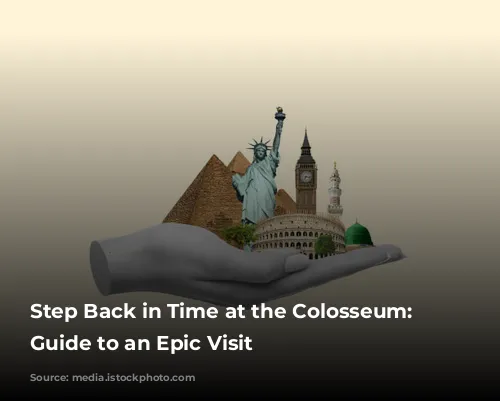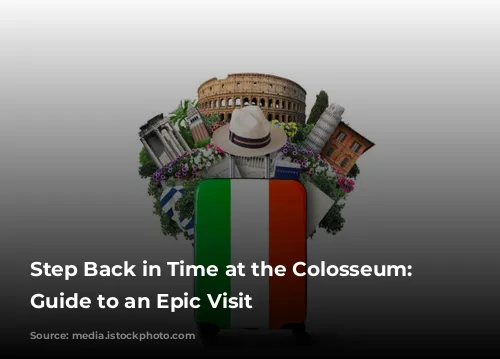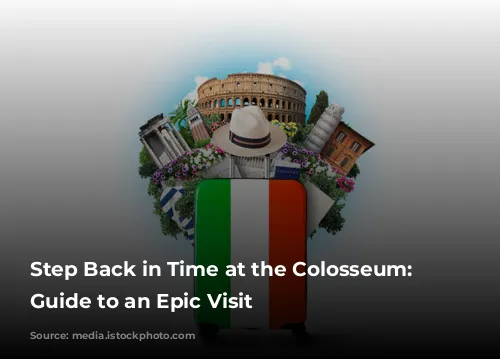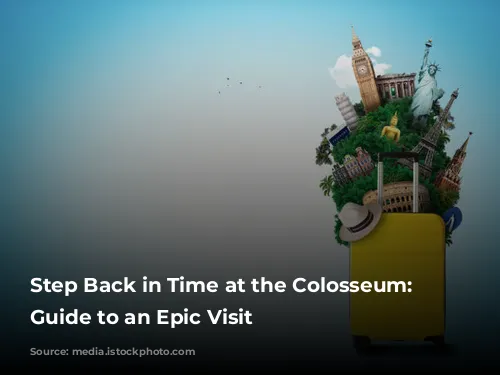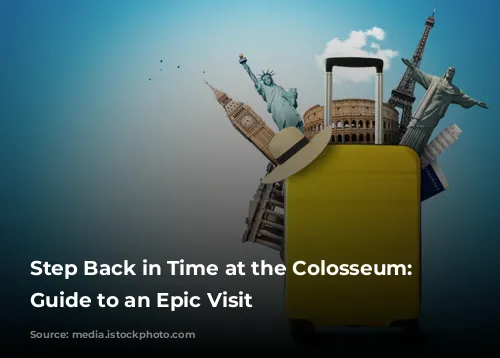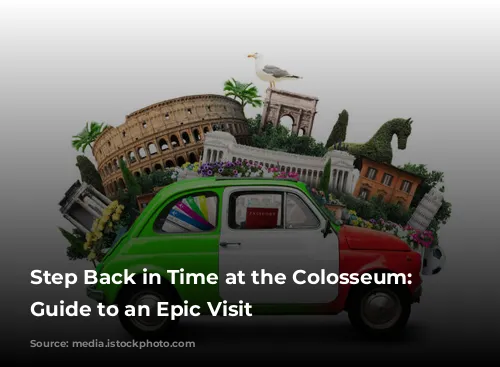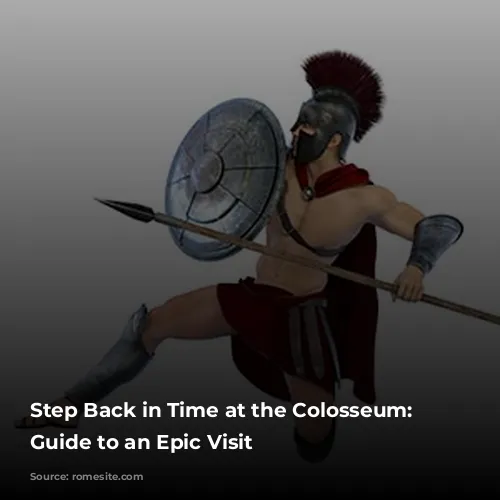Welcome to the Colosseum, a monumental amphitheater standing as a testament to the grandeur of ancient Rome. The Colosseum, also known as the Flavian Amphitheater, is a must-see for any visitor to the Eternal City.
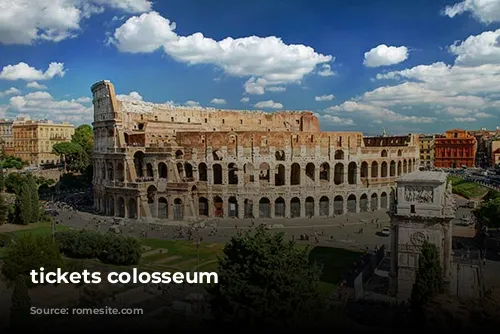
Secure Your Tickets and Prepare for an Unforgettable Journey
Booking tickets in advance is highly recommended as the Colosseum is a popular attraction. Tickets are almost exclusively sold online, so secure your spot before you arrive.
Here’s what you need to know about Colosseum tickets:
- Regular Tickets: This combo ticket includes the Roman Forum and Palatine Hill for a complete Roman experience.
- Limited Availability? Explore alternative ticket options.
- The Rome City Pass: This comprehensive pass grants access to top attractions in Rome, including the Colosseum, Forum Romanum, Vatican Museums, and more. It’s a cost-effective and convenient way to experience Rome.
- Guided Tours: Enhance your Colosseum experience with a guided tour. Explore the arena, learn about the gladiatorial contests, and delve into the fascinating history of this iconic landmark.
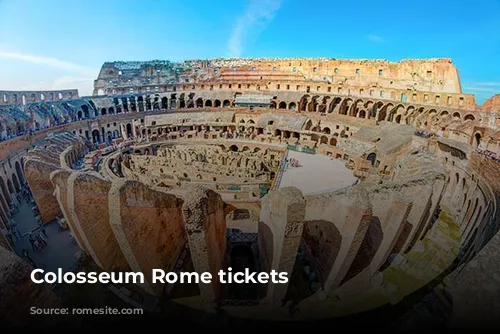
Unveiling the Colosseum: History and Construction
The Colosseum was commissioned by the Flavian Emperor Vespasian in 72 CE and took eight years to complete. This colossal structure was financed with spoils from the conquest of Jerusalem. It was officially inaugurated by Emperor Titus with 100 days of spectacular games and celebrations that included the sacrifice of 5,000 animals. Emperor Domitian, Titus’ successor, expanded the amphitheater with an extra level and underground spaces, making it the largest amphitheater in Roman history.

The Colosseum’s Purpose: Entertaining the Masses
The Colosseum served as a venue for gladiator battles, animal hunts, and public executions – all designed to entertain the Roman populace and bolster the emperors’ popularity.
In the mornings, bestiarii (animal handlers) would engage in fierce battles against wild beasts, such as elephants and tigers. Convicted criminals were often thrown to the animals during intermissions. Gladiator contests were held in the afternoons, showcasing the skill and brutality of these warriors.
With the rise of Christianity, the barbaric games were eventually outlawed by Emperor Honorius in 404 CE. The public execution of a monk who attempted to stop a gladiator fight marked the end of these brutal spectacles.

Decades of Destruction and Restoration
Over time, the Colosseum suffered damage from earthquakes and looting as its stones were reused for other structures. In 1749, Pope Benedict XIV declared the Colosseum sacred ground due to its historical significance and the blood of Christian martyrs spilled within its walls, bringing an end to the plundering.

The Colosseum’s Architectural Marvel
The Colosseum’s impressive architectural design showcases the ingenuity of Roman engineers.
- The 80 entrance arches provided access to the amphitheater.
- The Colosseum derives its name from the colossal statue of Emperor Nero, the Colossus of Nero, which once stood nearby.
- The total circumference of the amphitheater is 527 meters, with a maximum height of 48.50 meters.
- Various materials were used in its construction, including limestone, bricks, concrete, and travertine.
- The arena measured 76 by 44 meters and was surrounded by a four-meter wall.
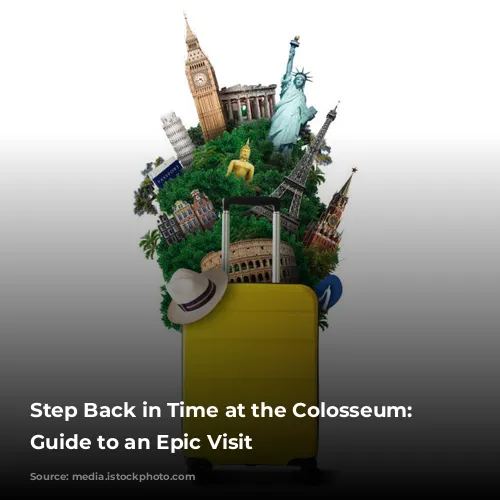
A Glimpse into the Colosseum’s Daily Life
The Colosseum’s stands were divided into four galleries, offering seating for different social classes.
- The lower seats were reserved for senators, magistrates, and other important figures.
- The emperor had a private box.
- The middle galleries housed male spectators.
- The upper gallery was reserved for the wives of senators and knights.
A large awning, called the velarium, could be stretched across the stadium using 240 masts to protect spectators from the sun. It’s said that 1,000 sailors were needed to secure the awning.
Hidden Secrets Beneath the Colosseum
Emperor Domitian’s expansion of the Colosseum included the construction of a hypogeum.
- This underground labyrinth contained trapdoors and lifts for bringing animals into the arena.
- Gladiator barracks, animal cages, and an underground passageway connected to Rome’s largest gladiator school were also found there.
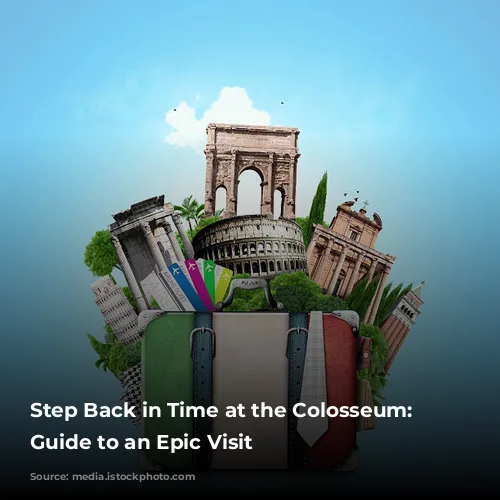
Plan Your Colosseum Visit Today!
Ready to witness the grandeur of the Colosseum firsthand?
Book your tickets online in advance for a stress-free experience. Remember to explore the various tours and ticket options available to make the most of your visit.
Don’t miss the opportunity to step back in time and experience this iconic landmark, a symbol of Roman power and engineering prowess.
